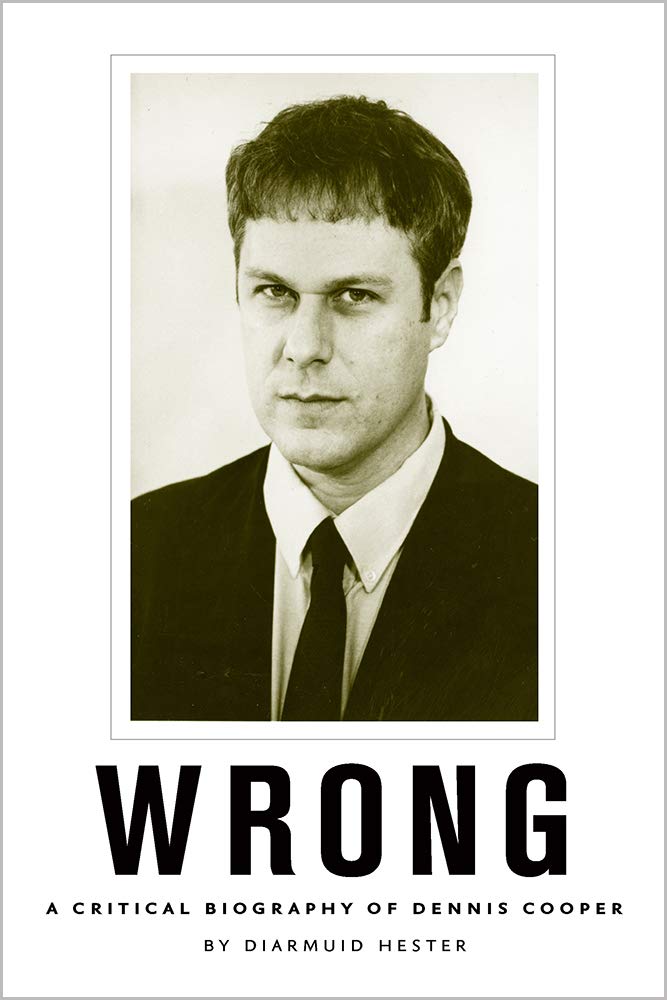_____________



Call_me_Marty, 22
Sao Paolo
i am a person that wants to get fucked. so i ask tops to show me their dick and then i show them my ass. i have no interest in face and other things like that. If you have big dick and $$$ show me and then fuck me.
Guestbook of Call_me_Marty
Anonymous – Oct 12, 2020
Book him a whole week.
CrispyJellyfish – Oct 9, 2020
The greatest fuck in the world and maybe in our planet’s entire history.
Always_speeding – Oct 3, 2020
Expand his hole, Explore his hole, Expunge his hole, Extract yourself.
YetAnotherHornyMan – Oct 1, 2020
You can fuck him so hard and fast you give yourself a concussion and he never makes a sound except maybe clearing his throat.
youmycherrycola – Sept 28, 2020
If you hire him be aware you must love ass! You must want his behind on display for your admiration and enjoyment. You must love rimming, fingering, toys, and ramming him in every position!
Dick M, Cut
Orientation Gay
Body Slim
Body hair Smooth
Speaks Spanish, English
Position Bottom only
Kissing Yes
FF Passive
S&M Yes
Dirty No
Oral Versatile
Smoker Socially
PNP Yes
Safe Sex On request
Rate per hour 8 €
Overnight 14 €
____________
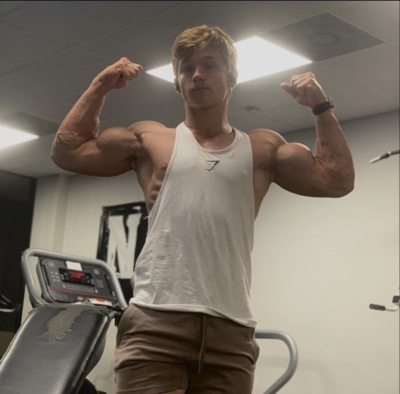
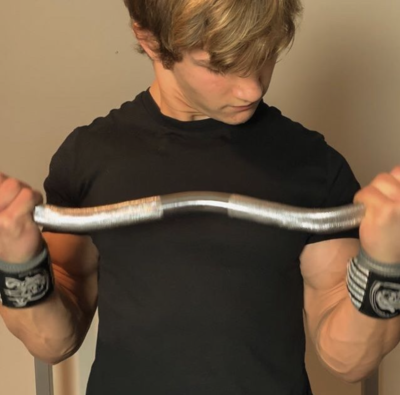


workoutaddict, 18
Budapest
I had a horse. I really liked it. And I rode a lot.
I would like to practise my English because I can’t speak well.
Now, I looking for a job in abroad if you can help me in this case.
My dream work: work in a farm (but I take any job).
I like to go in the nature completely naked and just jump around.
I have a girlfriend but I can easily break up with her.
Guestbook of workoutaddict
CalebM19 – Oct 4, 2020
Are you a campfire? Because you’re hot and I want S’more.
shegg – Oct 2, 2020
I’m William I work as an marine engineer I have two kids and love them so much but they won’t have sex so I’m looking for a sugar baby pls be real.
foreignerinsh – Oct 2, 2020
I want to give you head and eat your ass
Dick L, Uncut
Orientation Hetero
Body Muscular
Body hair Smooth
Speaks Hungarian, German, English
Position No answer
Kissing Depends
FF No
S&M No
Dirty No
Oral Top
Smoker No
PNP No answer
Safe Sex On request
Rate per hour 120 €
Overnight On request
____________



pwrbttm8, 19
Vilnius
Looking to settle down, first a fuck for 1K to see whether I like you, and I strictly need a dick pic no tricky angles, XL and XXL Size, I’m quite a fussy bottom, and very hot or whatever, and fuck yeah. UGHH!!
Guestbook of pwrbttm8
pwrbttm8 (Owner) – Sept 25, 2020
I can make your life a porn movie.
pwrbttm8 (Owner) – Sept 22, 2020
Again I’m only interested in a “long term relationship”, so if you pay to fuck me you should get used to the idea that you’ll be doing that for the rest of your life.
pwrbttm8 (Owner) – Sept 19, 2020
I moisturize my entire body 2x daily.
pwrbttm8 (Owner) – Sept 13, 2020
I have been fucked enough to understand deeply what I need in order to live my truth.
Dick L, Uncut
Orientation Gay
Body Slim
Body hair Shaved
Speaks Lithuanian, Russian, English
Position Bottom only
Kissing Yes
FF Passive
S&M Yes
Dirty WS only
Oral Versatile
Smoker Socially
PNP Yes
Safe Sex On request
Rate per hour On request
Overnight On request
______________



TWINKLE-STAR, 18
Marseille
my soul wants a gift please do something
Guestbook of TWINKLE-STAR
Anonymous – Oct 3, 2020
No matter how many profiles you make every day, it is not going to take you away since everyone now knows that your dick is NOT contracted at all by Drugs. And all you do is steal the world and leave.
Anonymous – Oct 3, 2020
Fuck your bad vibes
Anonymous – Oct 3, 2020
Baby dirty gypsy! Old-fashioned! Extremely dangerous! Stay away guys! No horny at all and extremely dangerous!
Dick XL, Uncut
Orientation Bi
Body Slim
Body hair Some
Speaks Romanian, French, English
Position Top only
Kissing Yes
FF Active
S&M Yes
Dirty Yes
Oral Versatile
Smoker Yes
PNP Yes
Safe Sex On request
Rate per hour 100 €
Overnight On request
______________

joshuadixon, 18
Tatabanya
I’m talking to very old tops. I’m a quirky bottom already at a level where I don’t kiss a man with a kiss, my penis doesn’t get to have a role, you can’t caress me with your hands or anything like that, I leave this game to the females.
What I would like:
I’ll drive to you
Shove it in my throat
Fuck it hard shoot
Spin me around
Shove it in my ass
Fuck it hard shoot
Guestbook of joshuadixon
Anonymous – Oct 2, 2020
he’s in abu dhabi and dressed like a cat
L8ER – Oct 2, 2020
Yes.
Anonymous – Oct 2, 2020
does he have a pink mushroom tattoo on his inner thigh ?
L8ER – Sept 30, 2020
Seeking information on the current whereabouts of “joshuadixon”, real name Tamás Papp. Last contact was on September 14 at 03h20 when he left a despairing and rambling voice mail on a friend’s phone. Very worried about him.
Crimlovesptv – Sept 20, 2020
This is a safe place for all teh satanist to discuss satanist stuff
joshuadixon (Owner) – Sept 17, 2020
I had a really shitty date tonight. My ass is a rotting sperm bucket and it’s bringing me down but my chronic horniness is really bad at the moment so I don’t want to clean it. You’d think I’d know what to do when I’ve felt this way after sex for most of my life.
Dick S, Cut
Orientation Gay
Body Slim
Body hair Shaved
Speaks Hungarian, Serbian, English
Position Bottom only
Kissing Yes
FF Passive
S&M Yes
Dirty Yes
Oral Versatile
Smoker Yes
PNP Yes
Safe Sex Never
Rate per hour 90 €
Overnight 300 €
______________



John_Boy, 19
Rotterdam
Looking for guys to rim me while I play videogames and completely ignore him, I just focus on my game and relax. The less I have to look away from the screen, the better.
You come in with the door, serve me a beer, then get on your knees and lick my ass for an hour or two til I cum, then you leave.
Need to be rimmed for ages and deep so you’ll be there a while, get comfortable. You’ll get to rest when I need you to go fetch me another beer.
I don’t come quickly, so have an endurant jaw.
Guestbook of John_Boy
Zuxxie – Oct 13, 2020
I wish you weren’t you.
clvn0006 – Oct 12, 2020
His confidence is misplaced.
looking4_bln – Oct 11, 2020
thinks he’s very funny but he’s not funny at all
Dick L, Cut
Orientation Hetero
Body Average
Body hair Some
Speaks Dutch, English
Position No answer
Kissing No
FF No
S&M No
Dirty No
Oral Bottom
Smoker Yes
PNP Yes
Safe Sex No answer
Rate per hour 80 €
Overnight On request
______________






NotUrTea, 18
Warsaw
We a Coppell and we have fun for cash if interested
We don’t need your love bullshit, pls you dumbasses
Guestbook of NotUrTea
RandomPerson – Sept 30, 2020
stretch these weak ass psycho nymphos’ bomb tight pussies really open with huge toys and eat them out once they’re gaped
AceAnthony – Sept 26, 2020
white trash drug messes in a stinking pig sty slum apartment but their holes pounded open are like juicy crystal palaces
CallMeDee – Sept 18, 2020
whiny pimply bony white haggard little cunts who look like they found their asses in a trash can
Dick M, Uncut
Orientation Gay
Body Slim
Body hair Shaved
Speaks Polish, Latvian, English
Position More bottom
Kissing Yes
FF Passive
S&M Yes
Dirty WS only
Oral Versatile
Smoker Yes
PNP Yes
Safe Sex No
Rate per hour 80 £
Overnight 250 £
______________


BreedMe, 20
Atlanta
I’m a slutty bttm $100 first load $50 second load cheaper after that I live alone ask where I am come by leave your loads behind
Guestbook of BreedMe
iamthecosmos – Oct 5, 2020
Forewarning that if you try to talk to him all he wants to talk about is his mental health.
BreedMe (Owner) – Oct 2, 2020
Also maybe looking for a guy that wants a full time breed hole… ideally prefer the slut life but can settle for a boyfriend thing if it’s something you rather want. I typically am a hole so I don’t have the experience or the knowledge of how to achieve feelings or whatever the case might be but am willing to learn it for the right guy that finances it and knows what he’s doing.
Gazpacho – Oct 1, 2020
I’m stunned, just pausing midsex to comment that I have already gushed in him three times and drenched him with sweat and saliva, and I wish you could smell this room.
Dick L, Cut
Orientation Gay
Body Average
Body hair Shaved
Speaks English
Position Bottom only
Kissing Yes
FF Passive
S&M Yes
Dirty Yes
Oral Versatile
Smoker No
PNP Yes
Safe Sex Never
Rate per hour 100 $
Overnight 400 $
______________

gang, 19
Paris
If you are over thirty-five as K asks you to pay for horny attack for you will die K the neighborhood dog
Screaming made us honry
Guestbook of gang
Anonymous – Oct 3, 2020
The thug with the Vuitton bag …. tremble !!! 🤢
Anonymous – Oct 3, 2020
Who did the dishes ?.
Anonymous – Oct 3, 2020
Is that a Kalashnikof in your pocket or are you just fat 🤣🤣🤣 my god I’m afraid !!!!
Dick XXL, Uncut
Orientation Hetero
Body Athletic
Body hair Some
Speaks Arabic, English
Position Top only
Kissing No
FF Active
S&M Yes
Dirty Yes
Oral Bottom
Smoker Yes
PNP Yes
Safe Sex No
Rate per hour 150 €
Overnight 1200 €
______________

scarletsnow, 20
Pozarevac
Potterhead 🔮
Searching for true love ❤️ 💸
Kind of new to this, ha ha ha ha
If you are searching for a hook up.. Go to hell 🙂
Iam not your sex doll baby 🙃
IAM DEAF AND SAFE FOR COMUNICATIONS 🧏♂️
I laugh at life dont cry and have a very loud laugh 🤣
Dick M, Uncut
Orientation Bi
Body Slim
Body hair Smooth
Speaks Serbian, English
Position Versatile
Kissing Depends
FF No
S&M No
Dirty No
Oral Versatile
Smoker Socially
PNP Yes
Safe Sex Sometimes
Rate per hour 80 €
Overnight 200 €
______________


DamnCovid, 19
Baku
Hi, I’m boy, I live in Baku. I am a Russian escort with a slim sexy smooth body. but First, thanks for taking the time to visit my profile! I come from Russia, I live in Baku. I am depilated in private places and very wow completely naked to the delight of your amazed eyes. My penis is small but perfection does not exist. INTERESTS: tax system, mutual funds, cryptocurrencies and more. Currently listening to: Tucked by Katy Perry.
Guestbook of DamnCovid
DamnCovid (Owner) – Sept 28, 2020
I have a/c
DamnCovid (Owner) – Sept 27, 2020
I can be a top in the case of an Emergency.
DamnCovid (Owner) – Sept 27, 2020
If you look ok, we can negotiate.
Dick S, Uncut
Orientation Gay
Body Slim
Body hair Shaved
Speaks Russian, English
Position More bottom
Kissing Yes
FF Passive
S&M Yes
Dirty No
Oral Versatile
Smoker Yes
PNP Yes
Safe Sex On request
Rate per hour 500 €
Overnight 2000 €
______________

belamipornstar, 24
Zurich
One of the most famous pornstar of all time available in zurich for short time visit . Text and book now !!!
Guestbook of belamipornstar
newneighbor2002 – Oct 5, 2020
I hired him 2 years ago before the surgery and he looked like Jeremy Irons.
funwithmark – Oct 4, 2020
He’s had SO MUCH surgery. I saw him at a meet & greet a few of months back and he looks like Madonna wearing a brown wig.
iwanttohavefun – Oct 4, 2020
Johan Paulik has to to be 50 years old by now, who are you trying to kid?
Dick XL, Uncut
Orientation Gay
Body Athletic
Body hair Shaved
Speaks Czech, German, English
Position Versatile
Kissing Yes
FF Active/Passive
S&M No
Dirty No
Oral Versatile
Smoker No
PNP On request
Safe Sex On request
Rate per hour 210 €
Overnight On request
______________

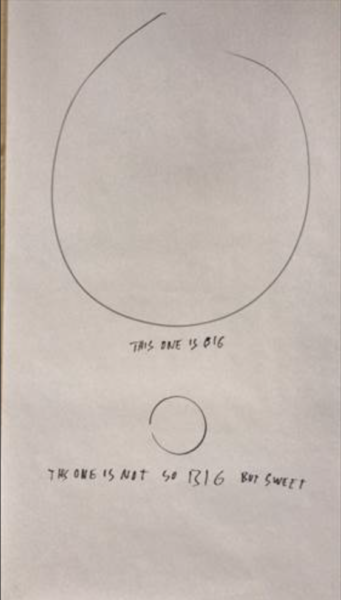
Iam13male, 23
Bronx
I am 13. I am really excited to be here. I am trying to lose my virginity. I like to know the person first before they go balls deep in me. And yes that’s a home made pizza in my dp.
Comments
Iam13male (Owner) – Oct 10, 2020
I’m at a age where I just need to know if we doing this or not… cuz I got shit to do.
Dick M, Cut
Orientation Gay
Body Average
Body hair Smooth
Speaks English
Position More bottom
Kissing Yes
FF No answer
S&M No answer
Dirty No
Oral Versatile
Smoker No
PNP Yes
Safe Sex On request
Rate per hour 3 $
Overnight 5 $
______________


syncopated, 20
London
Heya
I’m a twenty year old heterosexual young man who’s been straight my entire life… almost got married twice, and now I have another girlfriend.
Since 14 years old I’ve always been sort of interested in “gay” culture starting from taking a yoga class or two as a joke turning to life modeling and nude modeling for art classes and turning to doing strip tease acts for gay parties before I had to stop because people started thinking I was gay.
I’ve always only desired women sexually but I also have a very strong desire to be desired, and I don’t feel that from women. They don’t hunger for me, crave me, drool about me like I know and can feel men do.
I’m strapped for cash and I’d love to get back into this hobby which means with guys that understand that I have a girlfriend. This would be a very part time situation, quick, discreet, not getting to know each other. So you can have at me but please don’t think I’m gay and fuck it up this time 😘.
Guestbook of Heya
vonchristi – Oct 9, 2020
I’m lonely I need a bestfriend who is blond hair and has a shining eyes
syncopated (Owner) – Oct 2, 2020
I broke up with my girlfriend when I found out she is no longer honest with me any more. She wants me to bear it all in the relationship. She doesn’t want to make any impact and I can’t stand it any more with her. It was very painful to me but I tried to escape that from my heart and set the ball rolling and live a better life.
keeska – Sept 25, 2020
mostly looking for a blonde to fist. saw it on internet and would like to try.
syncopated (Owner) – Sept 16, 2020
I was deep in thought.
romeothefuck – Sept 16, 2020
Passive (like reeeeally passive), you have a greater chance of finding a single molecule of medicine in a homeopathic “medication” than you do of getting him to move.
Dick L, Uncut
Orientation Hetero
Body Average
Body hair Smooth
Speaks English
Position Versatile
Kissing Yes
FF No
S&M No answer
Dirty No
Oral Versatile
Smoker Yes
PNP Yes
Safe Sex On request
Rate per hour 150 £
Overnight 950 £
_____________

theinsanejew, 22
Las Vegas
Shaved head neo nazi boy for snuff fantasists.. Specially ni**ers and leftists. Arrange kidnap and abduction. Coverage area west coast. Hotel-motel 6 weekend. I can take it ko and hang n noose.
Guestbook of theinsanejew
theinsanejew (Owner) – Oct 7, 2020
Yes I do work in that store where you maybe saw me today. Please let’s not chat about that.
Anonymous – Oct 7, 2020
This is my first review I’ve ever written about escorts. I’m not an expert on escort but I am also Not nee in this world. I haven’t experienced such a great evening from violent start to hard core sex for years. I didn’t feel for a second that an escort was facing me, perfeect! 100% recommended from head to toe 👍
Dick S, Cut
Orientation Bi
Body Slim
Body hair Shaved
Speaks English
Position More bottom
Kissing Yes
FF Passive
S&M Yes
Dirty Yes
Oral Versatile
Smoker No
PNP Yes
Safe Sex On request
Rate per hour 100 $
Overnight 300 $
_____________

Blow-your-Mind, 20
Tucson
Cute weedhead skater hot body but arms and legs a bit banged up.
Recipe4InternalMe take=parts Ke$ha, MarilynManson, JasonMraz
Any fellatio you give me will necessarily end with a good orgasm.
Guy sitting next to me w phone and necklace might be possible 2
Guestbook of Blow-your-Mind
ShutUpUslut – Oct 10, 2020
Fkn do as u told!
idontknowifilikeboys – Oct 6, 2020
I know the boy with the phone & necklace, he won’t do anything like that, he says he’s never seen this guy in his life.
ass1234 – Oct 1, 2020
How this homely, flabby dud managed to take one attractive photo of himself is beyond my understanding.
Blow-your-Mind (Owner) – Sept 30, 2020
Please don’t tell me you love me unless you really do, if dick is all you want, say it, I already said I don’t mind sharing it.
Dick L, Cut
Orientation Bi
Body Average
Body hair Some
Speaks English
Position More top
Kissing Depends
FF No answer
S&M No answer
Dirty No answer
Oral Versatile
Smoker Yes
PNP Yes
Safe Sex On request
Rate per hour 150 $
Overnight On request
______________

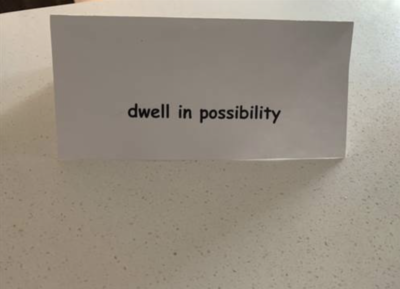
ItisWhatitIs, 19
Oxford
If you are not over 52, maybe 53 I want your tongue in my ass so fucking bad.
Guestbook of ItisWhatitIs
ItisWhatitIs (Owner) – Oct 12, 2020
Please be lenient with me. I’m overwhelmed by the offers that comes in here. I’ve been with 11 men in the last 2 days, and I haven’t slept. I need to do that and let my ass dry out and close back up. I will try to answer you as soon as possible. THANK YOU.
mmmpppff – Oct 9, 2020
Ive started making facesitting vids with this boy (im the seat) Made a couple vids to get responce which ive posted on twitter and theres clammoring for more. Need more local oxford london et. faces to produce more vids for online. Boy will be paid for his time, which are usually under 15 minutes in length.
ItisWhatitIs (Owner) – Sept 27, 2020
Yes when you think about it.
born2eatass – Sept 27, 2020
So nice that you and us can be satisfied by something so simple.
ItisWhatitIs (Owner) – Sept 27, 2020
People have said that to me a million times.
born2eatass – Sept 27, 2020
What a coincidence, when I saw your pic and before I even read the text I thought, I have to slide my tongue in his ass or I’m going to die.
Dick S, Cut
Orientation Gay
Body Slim
Body hair Smooth
Speaks English
Position More bottom
Kissing Yes
FF No
S&M No
Dirty No
Oral Top
Smoker No
PNP Yes
Safe Sex No answer
Rate per hour 1 £
Overnight 100 £
_______________


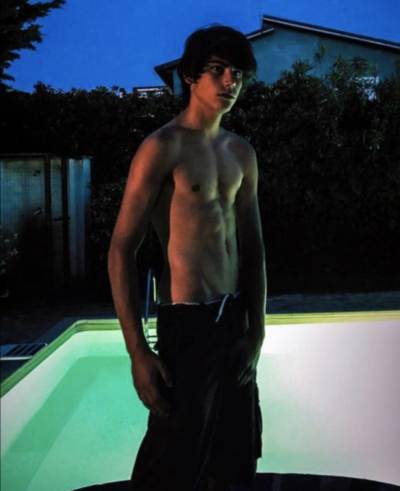


GeorgesBataille, 19
Milan
I’m new here. Want to try something new that i feel i could really cope with. Only just got into gay. Don’t have much gay yet. I will get more. Don’t ask whether i am bottom or top (idk myself). My GF wants to watch. Can you help me😘.
Guestbook of GeorgesBataille
GeorgesBataille (Owner) – Oct 3, 2020
Fuck the system and maybe you!!
georgemarian – Oct 3, 2020
His escort name is some kind of inside joke between him and his girlfriend that makes them laugh.
GeorgesBataille (Owner) – Oct 1, 2020
I’ve decided I’m not a gay and not interested in gay also so text me girls for sex not gay.
PeteEvans – Sept 22, 2020
IF YOU HAVE THE PATIENCE AND 💰 TO GET HIS ASS IN PLAY HE IS ANALLY GIFTED WITH A TIGHT GRIP AND TOOK MY 9.5 INCHES ALL THE WAY
GeorgesBataille (Owner) – Sept 16, 2020
My apartment lease is almost up and i want to move in with a muscle coach who is looking to train a boy to be a beast. In return i would be willing to do mutual jo after each workout session.
Since the quarantine i’ve been trying to workout but i don’t have the space for my weights to be effective in training. I have a weighted vest/ and 2 Set of 30/65lbs dumbbells.
GeorgesBataille (Owner) – Sept 12, 2020
Attention, I am stupid and arrogant and will not take unsolicited advice.
AmazingKisserFU – Sept 10, 2020
he’s not as hot as his girlfriend has lead him to believe
areindanger – Sept 6, 2020
Doesn’t want to see you naked, and he doesn’t want to be naked. He just needs money and has an authoritarian girlfriend and wants someone to talk to.
Dick L, Uncut
Orientation Bi
Body Slim
Body hair Smooth
Speaks Italian, English
Position Versatile
Kissing No
FF No
S&M Yes
Dirty No
Oral Versatile
Smoker Yes
PNP Yes
Safe Sex On request
Rate per hour 50 €
Overnight On request
______________



aintyourtype, 18
Capas
I really hate when you play with my feelings because am gonna find you.
I AM LIVING HERE WITH MY WIDOW MOM SEARCHING FAT MATURED MEN.
Guestbook of aintyourtype
aintyourtype (Owner) – Oct 3, 2020
I do not like drama. I like to make people laugh.
WhiteCountry – Oct 3, 2020
If you is a snowflake then we not gone get on. I’m not PC. Southern born and proud. Real traditional in my views. Love trucks, poker, cigars, whiskey, beer and ribs. Hate other races. Let’s see you give me what the other fuckers didn’t. Don’t waste your time unless you givin that ass 100%.
aintyourtype (Owner) – Sept 28, 2020
If you wanna friends I can be friends. If you wanna son I will be son.
PrimalBlaze – Sept 27, 2020
I’m kinda over needy, greedy, clingy, thirsty, desperate, demanding, presumptions, faggy, and overall unpleasant bitchy bottoms but she was hot.
aintyourtype (Owner) – Sept 21, 2020
At my young age I asked the permission of my parents. If I can go to the city to continue my high school life. While supporting myself as a worker ssex. And being independent person this time is not uneasy to be. But the good things on it are it makes me more stronger and motivated when the times of missing someone (father)😢 ahhh.. But that’s life dear! be practical, stronger, always smile (even it not happy) and do the things where makes you happy…. anddddd, don’t forget your family to support them (mother) if you have a body to work. thank you😘
Dick S, Cut
Orientation Gay
Body Slim
Body hair Shaved
Speaks English
Position More bottom
Kissing Yes
FF No answer
S&M No
Dirty No
Oral Versatile
Smoker No
PNP On request
Safe Sex On request
Rate per hour 70 $
Overnight 200 $
______________


2Snuff4$$$$, 23
District of Columbia
1. ~Cause the suicidal thoughts that are still in my head give her that awful side-smile when I lay in bed~ 🩸 2. death is beautiful … There is no other hell for a man than the stupidity and the wickedness of everyone else.
. I have served men for my entire life.
. I am looking for EXTREME sadists.
. I am young and sane.
. i am irrelevant.
. I keep my self dehumanised 24/7.
. I have NO limits, my existence is for you.
. I crave pain.
. I crave to be the object/animal that I am.
. I crave the ultimate sacrifice.
Guestbook of 2Snuff4$$$$
LestatDeLioncourt – Oct 12, 2020
Why don’t you try being open and honest for once in your fucking life!
A_God_in_an_Alcove – Oct 6, 2020
that you know bauhaus well enough to recognize an obscure song title only proves my point!
2Snuff4$$$$ (Owner) – Oct 6, 2020
… says the guy using a Bauhaus song as his name LOL
A_God_in_an_Alcove – Oct 6, 2020
no one who wants what you say you want would use a pic of himself with “redrum” written on his chest in fake blood, you poseur!
anwar_bastian – Oct 6, 2020
he will stay alive and have sex but it is predictably lifeless and emotionless
2Snuff4$$$$ (Owner) – Oct 2, 2020
I’m really sorry. On the one hand I feel flattered to get so many offers, on the other hand I lose interest in doing it this way when I read through the terrible pick-up lines. I don’t want to jump into bed with any of you. I am alive and would only like to change this.
ZEFRILAFIQ – Oct 1, 2020
I wouldn’t give you the satisfaction, you nihilist craphead!
Dick L, Cut
Orientation Gay
Body Average
Body hair Shaved
Speaks English
Position More bottom
Kissing Yes
FF Active/Passive
S&M Yes
Dirty Yes
Oral Versatile
Smoker No
PNP Yes
Safe Sex Never
Rate per hour 50000 $
Overnight 1 $
_____________

Heroquest, 19
Glasgow
I’m Matteo, I’m a dumb stoopid chav, I’ll fuck anything that moves, even you.
Guestbook of Heroquest
Heroquest (Owner) – Oct 5, 2020
Made this account when I was drunk oops.
Heroquest (Owner) – Oct 4, 2020
No, you can’t fuck me even if you pay me a billion dollars.
Heroquest (Owner) – Oct 4, 2020
I’m skinny but my dick is huge. Period!
Dick XL, Uncut
Orientation Hetero
Body Slim
Body hair Smooth
Speaks English
Position Top only
Kissing No
FF Active
S&M Yes
Dirty Yes
Oral Bottom
Smoker Yes
PNP Yes
Safe Sex On request
Rate per hour 50 £
Overnight On request
_____________




Bored_af02, 21
Vienna
“Broke bitches so crusty (disgust me)” describes me very well at the moment 😬 Depression tingz. Am the definition of trainwreck. 2 seconds after posting this, I’ll regret all of my life choices. If you feel like you want to party heavily with me temporarily, I’m ambivalent but will if you give me what I want.
Guestbook of Savage_love
child_of_medusa – Oct 8, 2020
there’s something between us, something dark and urgent, can you feel it?
Bored_af02 (Owner) – Oct 5, 2020
Some shit I’ve done working here so far so you know what I can get up to (prices vary):
1 = took someones virginity
2 = fucked someone so hard they couldn’t walk afterwards
3 = fucked someone so hard they came handsfree
4 = got fucked so hard i went crazy
5 = got fucked so hard i was REALLY happy afterwards
6 = took cum inside (many times)
7 = had my cum swallowed (many times)
8 = had sex in the park
9 = someone came down my throat (many times)
10 = got spit in my face and/or mouth
11 = got choked & slapped
12 = pissed in someone’s ass
13 = threesome and group (as top and bottom)
14 = took toys deep through my 2nd hole
15 = pics/videos taken (many times)
16 = had my cum collected for someone else
17 = got fucked until I was dizzy
Dick XL, Uncut
Orientation Gay
Body Average
Body hair Shaved
Speaks Croatian, German, English
Position Versatile
Kissing Yes
FF Active/Passive
S&M Yes
Dirty Yes
Oral Versatile
Smoker Yes
PNP Yes
Safe Sex Sometimes
Rate per hour 300 €
Overnight 300 €
______________
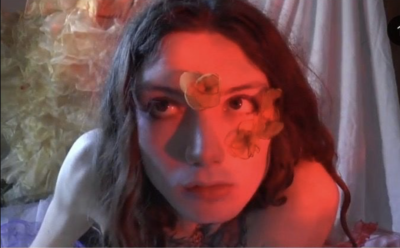

dowhatyouWantTellme, 21
Paris
deep inside, alone, lost in oneself in the lil peace of shit and imma depressed asf
Guestbook of dowhatyouWantTellme
dowhatyouWantTellme (Owner) – Oct 2, 2020
i love daddies who need to lift their bellies to reach their cock.
TheAlmightyLoaf – Oct 29, 2020
You need just help,no money nothing , just hellp
dowhatyouWantTellme (Owner) – Sept 29, 2020
if yr nice def hmu if yr not still hmu
kinkyT2020 – Sept 27, 2020
I stood over him and said, “that’s where you belong bitch…down on the floor. I stood over the bitch and said, “bitch I’m going to let you come up here and suck my cock..and don’t you dare let me feel your teeth on my cock” bitch quickly pulled up and proceeded to suck my cock. Once I was nice and hard he grabbed bitch’s hair on either side and started face fucking bitch and pushing my cock down his throat causing bitch to gag and drool. I said, “good bitch, drool like a little fuck pig”. I was still holding bitch by the hair as I forcefully pulled bitch off my cock, as I let go with one hand to wipe the drool all over bitch’s face, while continuing to hold his hair by the other. I tasted bitch’s drool, licked my hand clean, delicious, then smirked as I slapped bitch’s wet face with my clean hand and threw bitch down to the floor, “get your ass up in the air and spread your cunt wide you bitch!” …sorry I gotta take a piss, to be continued..
dowhatyouWantTellme (Owner) – Sept 15, 2020
LET THE HEMORRHAGING OF CUSTOMERS COMMENCE!
Anonymous – Sept 15, 2020
He shampooed at Maxim’s
Dick S, Uncut
Orientation Gay
Body Slim
Body hair Shaved
Speaks French, English
Position Bottom only
Kissing Yes
FF Passive
S&M Yes
Dirty Yes
Oral Versatile
Smoker Yes
PNP Yes
Safe Sex Sometimes
Rate per hour 150 €
Overnight 250 €
_______________

TextMeFirst, 18
Hjørring Municipality
I’m on vacation with my family at Nørlev Strand. And I’m really horny.
Guestbook of TextMeFirst
TextMeFirst (Owner) – Oct 5, 2020
I’m not horny anymore. Bye.
TextMeFirst (Owner) – Oct 5, 2020
It’s 15h and I prbly have time for one more if you hurry.
TextMeFirst (Owner) – Oct 4, 2020
My family is going sight seeing tomorrow. Give me a reason to pretend I have a cold.
Dick M, Uncut
Orientation Bi
Body Slim
Body hair Smooth
Speaks English
Position More bottom
Kissing Yes
FF No
S&M Yes
Dirty No
Oral Versatile
Smoker No
PNP No
Safe Sex Sometimes
Rate per hour 50 €
Overnight On request
_______________



YoungAmerican, 20
Paris
I will not be satisfied until I have a permanent horse cunt.
I’m here because I have a massive interest in fisting, and although I’ve never been fisted I have some very large toys and already know I can fit a fist, and I will be buying some even bigger toys very soon.
I’m looking for guys to help make my hole grow and achieve my ultimate cunt size, the goal being to ride an arm like a dick, and ultimately double arms. I’m also excited to engage in all sorts of related anal sleaze.
As I am now living with 3 girls I’m incredibly unlikely to accommodate the filth we may get up to, but I’m happy to come to anyone willing to help me blow my cunt out!
p.s. (while I want to stretch my hole to new heights I do not want to have to explain what happened in a hospital)
Guestbook of YoungAmerican
shemalehunter – Oct 8, 2020
I advise you instead to put on a yellow vest and go fight with your brothers in the street for your rights.
Dick L, Cut
Orientation Gay
Body Slim
Body hair Not very hairy
Smoking No
Speaks English
Position Bottom only
Kissing Depends
FF Passive
S&M Soft SM
Dirty WS only
Oral Versatile
Safe Sex Let’s talk
Rate per hour On request
Overnight On request
_____________



Chewy, 19
Budapest
Looking to be kept over for a night as a chew toy by a perverted and sick in the head man or men. This should result in me being blindfolded, thrown around like a ragdoll, then tied to the bed all night where you can chew all I have all night.
I’m ideally looking for much older filthy men who want to chew a pretty, tight holed young man. I hereby agree that once I am in the house and you lock the door behind me, that I am not able to leave and I can be tied down and chewed as much as you see fit.
Guestbook of Chewy
Hypnose – Oct 11, 2020
I am a naturopath for hypnotic psychotherapy. My practice is in Budapest. In addition to hypnosis, I also offer conversation, intimacy training and sexual therapy. This is a method for dealing with trauma, fears and phobias that lead to conditions such as dermatophagia (obsession with being chewed). Sometimes just one session is enough to make these fears and behavioral anomalies a thing of the past once and for all. For the 1st session I pay 120 €, 2nd session: 80 €. Send me a message and we will make an appointment.
Dick S, Uncut
Orientation Gay
Body Slim
Body hair Smooth
Smoking No
Speaks English, Hungarian
Position Bottom only
Kissing Consent
S&M Yes
Dirty No
Oral Top
FF Let’s talk
Safe Sex Sometimes
Rate per hour 150 €
Overnight 500 €
______________



MyShorts, 18
Stuttgart
I love my underwear.
Loosely nestled around my penis or pressed tightly to my body. I would like to share my passion for underwear with you.
Visit me and I’ll wear boxer shorts, briefs, bikini bottom or any underwear you prepay for and as you like!
My versatile hobbies make each copy unique. Depending on the activity, the underwear takes on a unique scent and an individual appearance.
The laundry is really stressed when I go out dancing. Dancing, sweating, cruising, getting boners are on my nightly program.
Did you get the scent?
Describe the smell of my underwear in your own words and I am sure that the experience will give both of us satisfaction!
Guestbook of MyShorts
MyShorts (Owner) – Oct 1, 2020
At first I was an atheist, but then I became God 👁
hihowareutodayy – Oct 1, 2020
BE CAREFUL: this boy steals everything he can from you, drugs you to facilitate theft! He is addicted to Tina. Don’t listen to him, he’s a handsome (parlzue which is a shame for his Brazilian colleagues!) SEARCHED BY THE POLICE !! 🆘
Dick L, Uncut
Orientation Bi
Body Average
Body hair Some
Speaks German, English
Position No answer
Kissing No
FF No
S&M Yes
Dirty No
Oral No
Smoker Socially
PNP Yes
Safe Sex No answer
Rate per hour 100 €
Overnight On request
______________




xXP4ssyD3str0y3rXx, 19
Imus
Hi my name is Carlo and I like GIANT DICK🍆 and a ton of CUM🥛 in my Pussy and Mouth TAKE CHARGE OF ME (ฅΦωΦ)ฅ I like getting My ass licked and and my Nipples chewed 🥵 I GIVE A BLOWJOB AND GET FUCKED 6 time for a day minimum ༼ つ ✿◕‿◕✿༽つ (‿ˠ‿) MY PUSSY IS EVERYTIME YOUR GIFT 🎁 I like HUGE penises and I have a small one of approx 10cm. 🥺 Call me for sex if you have a VERY BIG penis and YOU CAN EVERYDAY-NIGHT TIME FUCK ME 😛🤧🤧🤧🤠 I don’t give a shit how old you are or what you look like 👹 My name is what exactly I need from you 🔥💦💦💦 FILL MY PUSSY FULL OF CUM
Guestbook of xXP4ssyD3str0y3rXx
Anonymous – Oct 7, 2020
An aptly named poet!
NuffSaidMate – Oct 2, 2020
If hes in ur car n u touching his ass n he wants to sniff n lick ur feet first .. undo ur laces, take off ur socks close your eyes n hand over ur feet.
Kinkyfkster – Sept 30, 2020
If the connection is there Carlo can be slapped, verbally abused, given deep hickeys, rimmed, slam fucked, and so much more while choking him all the way.
Purpleghost – Sept 21, 2020
I’ve fucked Carlo a lot. 45 times would be a guess. He gave me an extra key to his place. I go over there and mount him anytime I want. Usually 3 or 4 times throughout the day.
fuck_eat – Sept 17, 2020
Sweet face to trash and fuck with toys and cock, same with his butt.
Dick S, Cut
Orientation Gay
Body Slim
Body Hair Not very hairy
Smoking No
Speaks English
Position Bottom only
Safer sex Never
SM Yes
Dirty Yes
Kissing Yes
FF Passive
Oral Versatile
Speaks English
Kissing Yes
Smoker Socially
PNP Yes
Rate per hour 100 $
Overnight 2000 $
________________



highly_confused, 19
Bonn
Today 09/03 Looking for daddys who just fuck me outdoors without asking and only use them and have to film me, wait this evening / night from 11 p.m. at the Südfriedhof Bonn Dottendorf (in der raste) everyone can come you’ll see the slut in my eyes from a mile away If you wanna pay me go ahead I need the money
Guestbook of highly_confused
highly_confused (Owner) – Sept 4, 2020
i learned early on how to get in and out of people’s lives
DirtyJock69 – Sept 4, 2020
Wow, that was really fun!
nope – Sept 3, 2020
a lot can happen in five minutes
DisneyFanBoy – Sept 3, 2020
I have for sale some hot sex videos of him from other nights being penetrated by big cocks 8 to 11 inch and leaving his ass blown out and pouring milk if your not in Bonn.
highly_confused (Owner) – Sept 3, 2020
fyi I am a little underweight right now
Dick M, Uncut
Orientation Bi
Body Slim
Body Hair Not very hairy
Smoking Yes
Speaks German, English
Position Bottom only
Safer sex Never
SM Yes
Dirty Yes
Kissing Yes
FF Passive
Oral Versatile
Speaks English
Kissing Yes
Smoker Yes
PNP Yes
Rate per hour On request
Overnight On request
________________



HottieGolddigger, 19
Barcelona
Yoo, i like videogames and surfing🤟🏻 looking for money tho🖤 My place videogames and surfing and expected shit 🖤 (Idk if im into guys or not honestly so go easy on me)
Guestbook of HottieGolddigger
palmlover – Oct 8, 2020
I’m wealthy and bored of Barcelona so I’d be grateful if you help me with that.
sissysucker – Oct 5, 2020
I don’t wanna spit, I wanna gulp I wanna gag, I wanna choke I wanna heave I want your cock to touch that little dangly dang That swang in the back of my throat
WonderfulLifetime – Oct 5, 2020
smokes a lot of weed basically haha likes to watch tv. has a puppy too it’s his best friend lol. down for not much🤷🏻♂️
Dick L, Uncut
Orientation Hetero
Body Slim
Body Hair Smooth
Smoking Yes
Speaks Spanish, English
Position Versatile
Safe sex Always
SM No answer
Dirty No
Kissing Depends
FF No
Oral Versatile
Kissing Yes
PNP Yes
Rate per hour 150 €
Overnight 500 €
*
p.s. Hey. ** David Ehrenstein, Hi. I too liked ‘Young Aphrodite’ possibly most among his films that I’ve seen. Thanks. ** Gus, Hey, Gus. Welcome back! I’m hitting a bookstore here today that might just have the Kier-La Janisse book or will surely order it if not. Yeah, I loved SY too. Still do. It was indeed a serious mindblow to have Thurston read that. Not to mention hearing him speak the ‘Thurston’ parts of the dialogue and inhabiting my fake Thurston. I’ve been meaning to write to NYU to see if it would be possible for them to make the video public. Also Stephen Malkmus, John Waters, and other very cool artists read my stuff at the event too. It was insane. Oh, cool, I just did a search and found the California Girls bandcamp and that album! I’ll listen to it today. Great, I can start to get to know your work too. You’re writing text: like fiction or non-fiction or … ? I hope the Lexapro does the trick you need. I’ve never taken it, but I have a few friends who do and I think all of them have found it quite useful/helpful. I’m in Paris, yeah, and it’s full on autumn with all the good things about that (I hate hot weather), and even though we’re getting more paused at the moment (9 pm curfew as of this Saturday), it’s still a pretty great place to be. You live in Sydney? Bandcamp centers your music project there. How are things in your surroundings? Best back to you. ** _Black_Acrylic, Hi, Ben. His work has become pretty obscure. Why I did the post, I guess. Well, it could have been worse than the 9 pm curfew, and that does kill some events I was really looking forward to. I’m sort of in the mindset of trying do what to takes to kill this thing whatever the hassle rather than pussyfooting around with diddling measures like in the States and maybe the UK that just stretch the thing out. Just really hope the curfew helps. Because lockdown would be next. ** Steve Erickson, I haven’t seen ‘Midsommar’. The thing I read said BA has a small but pivotal role, whatever that means. New song! Everyone, Mr. Erickson has added to his growing oeuvre as a music maker. Here he is to explain and hook you up: ‘I wrote a new song today, “I Keep Falling Faster”. It’s largely an test of my ability to work with sung vocal samples. I repeated a 30-second vocal snippet twice , as though it were a chorus, except with different melodies underneath it. Dalisson, the Brazilian rapper I remixed last month, is releasing a new album at the end of this month, and I’d like to do another remix, especially if I can get all the stems directly from him.’ No, it’s just a curfew. If you’re caught on the street from 9 pm onwards, you get a fine. Other than that, life continues as it was for now. ** Brian O’Connell, Hi, Brian. Yes, his rightward shift is perplexing, especially as he was renowned for the leftism in his work. I don’t know what if anything this means, but I will say that when I make my searches of the escort sites for posts like the one today, literally every time there’s an escort based in Greece who’s not Greek/white, the escort’s guestbook is filled with a torrent of racist abuse. The sites I search are mostly international, and there’s not another country in the world where that’s the case every single time. It happens in Germany too, off and on, but not thoroughly like in Greece. It’s very strange. I figured BA’s appearance in ‘Midsommar’ had to be some kind of homage or something to his iconic status. ‘Red Desert’ is great, yeah. That whole period of his films from ‘L’Avventura’ through ‘Blow-Up’ is incredible. I’m a huge fan of Fellini’s ‘Satyricon’. It’s nuts. A favorite film of mine in general, and easily my favorite of his films. I just got tickets to go to the amusement park Parc Asterix’s Halloween makeover on Saturday, so I’m definitely spookifying Paris as best I can over here. I hope you’re finding the excitingly dark over there. Take care. ** Right. It being the 15th of the month here on the blog, the predictable has happened. See you tomorrow.

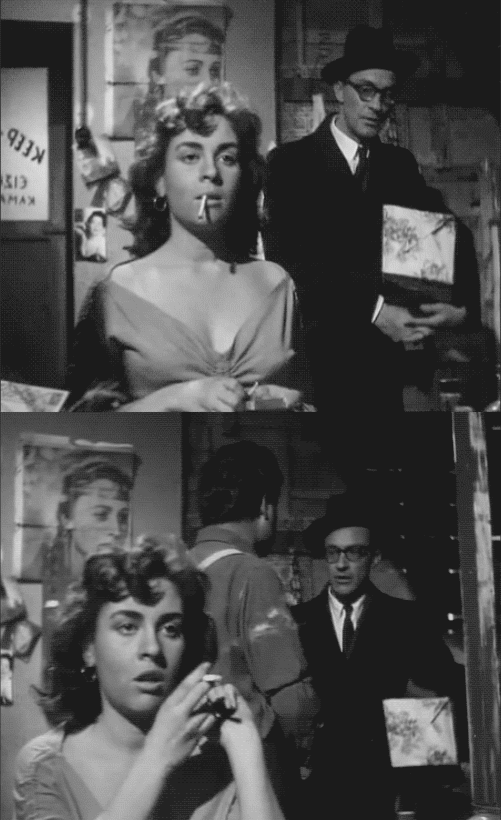
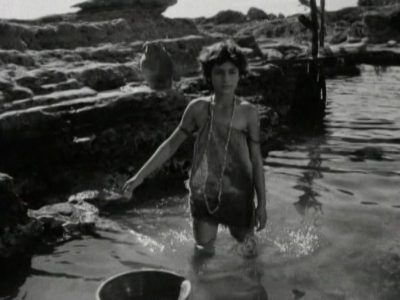
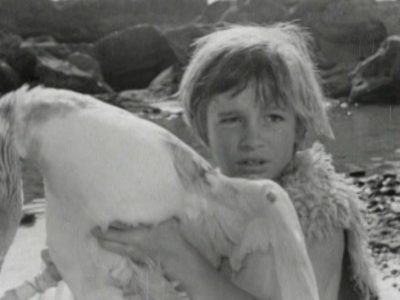


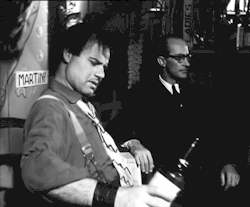

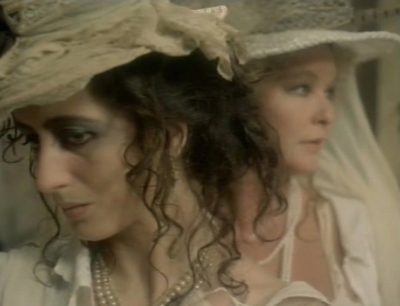
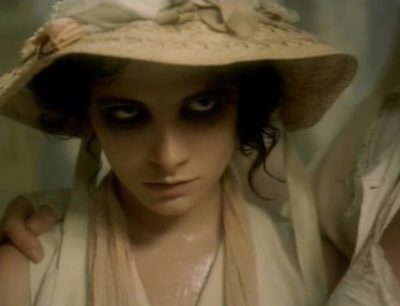
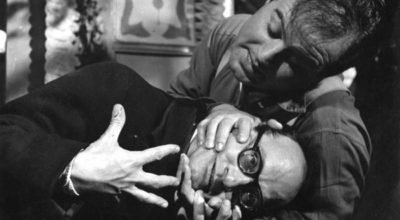



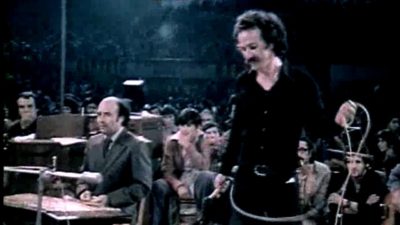
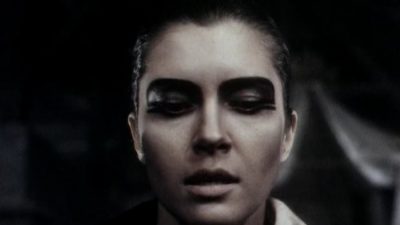
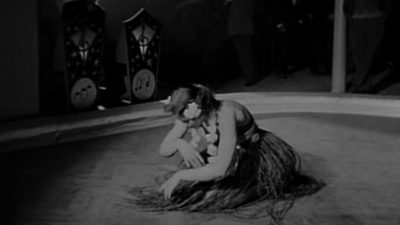



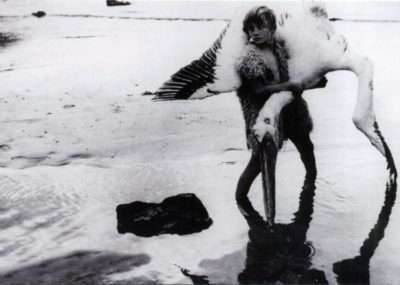
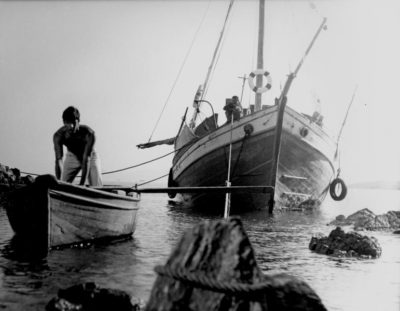

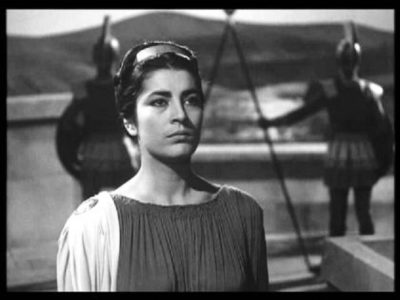
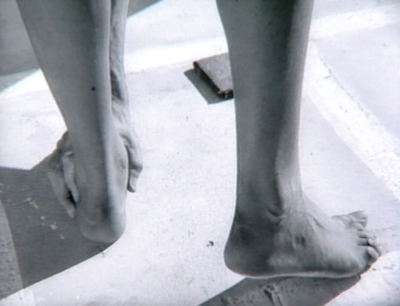
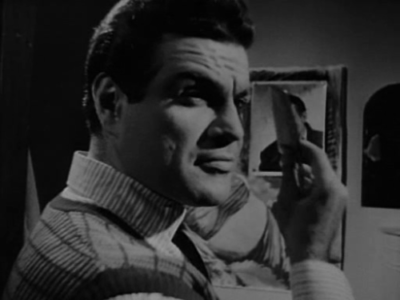
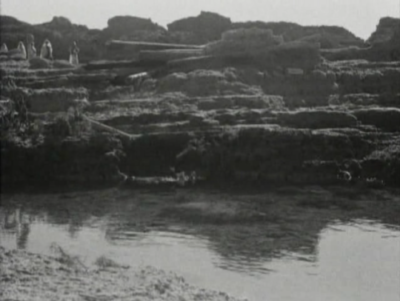

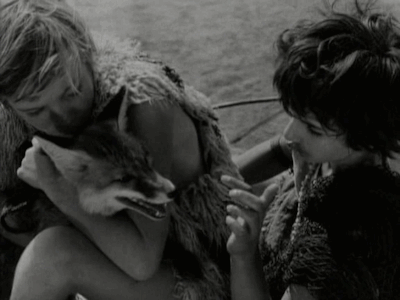
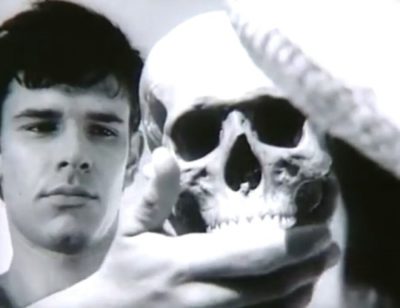

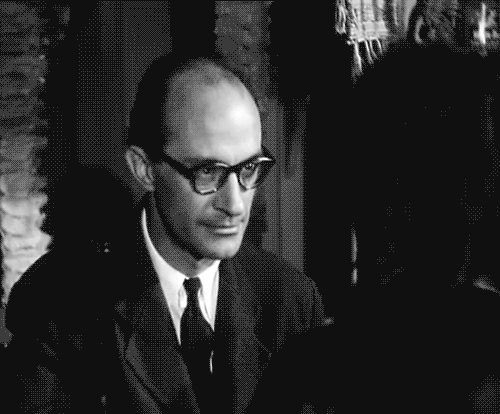
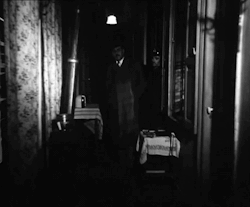
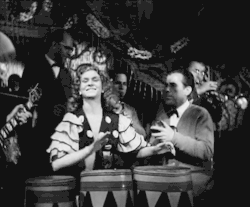

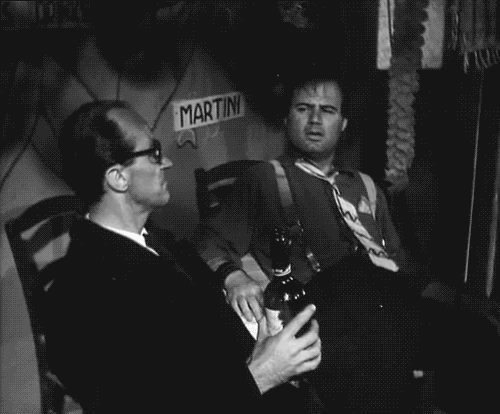
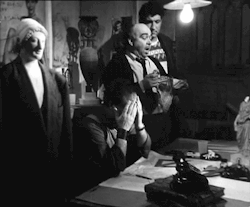
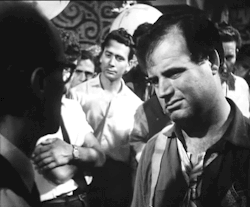

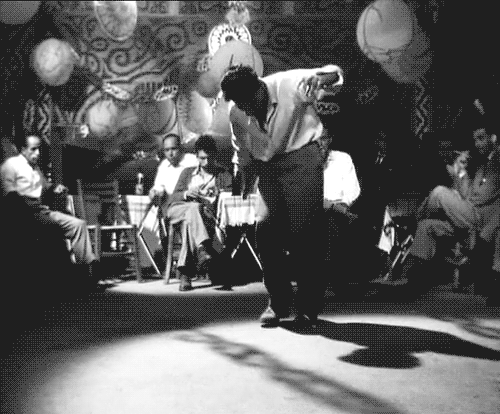
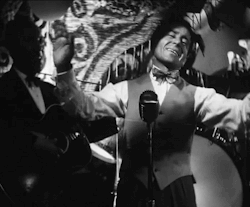
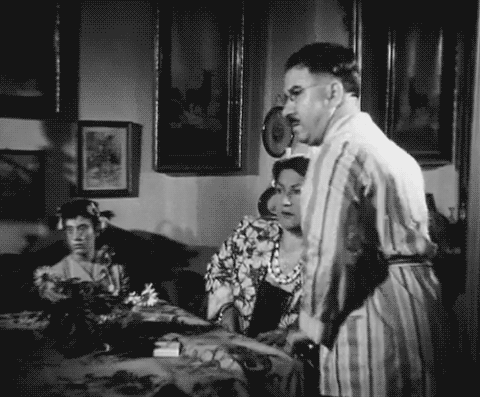

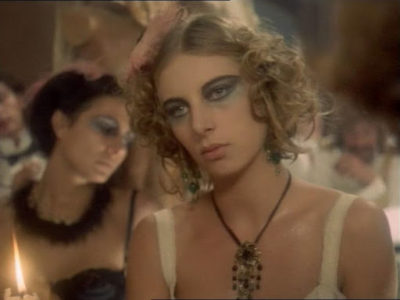
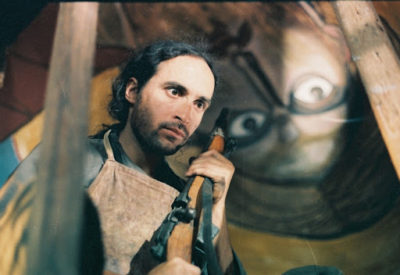

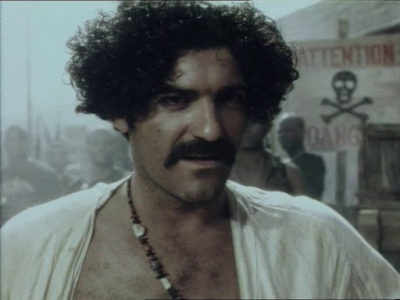

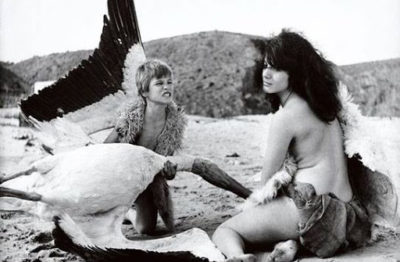
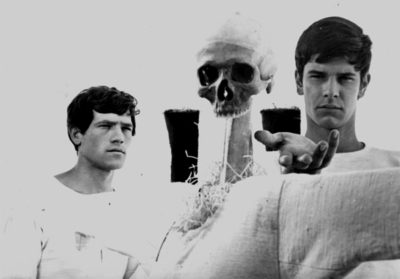


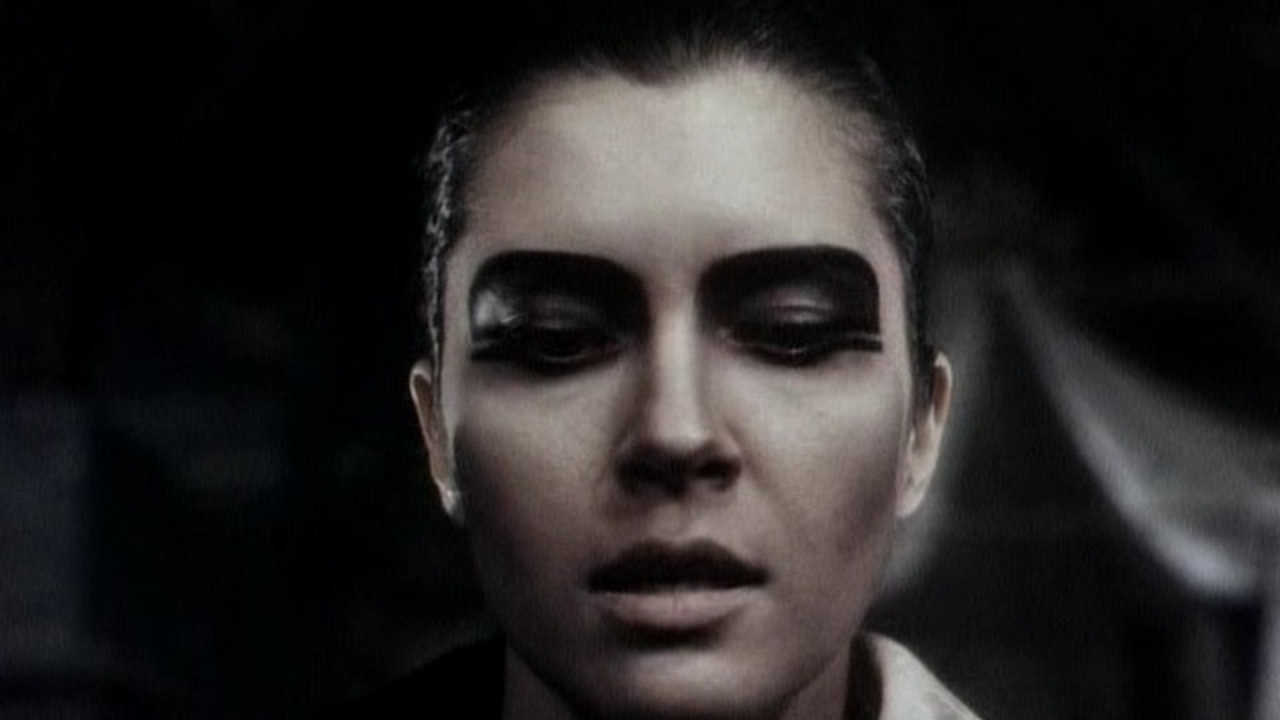
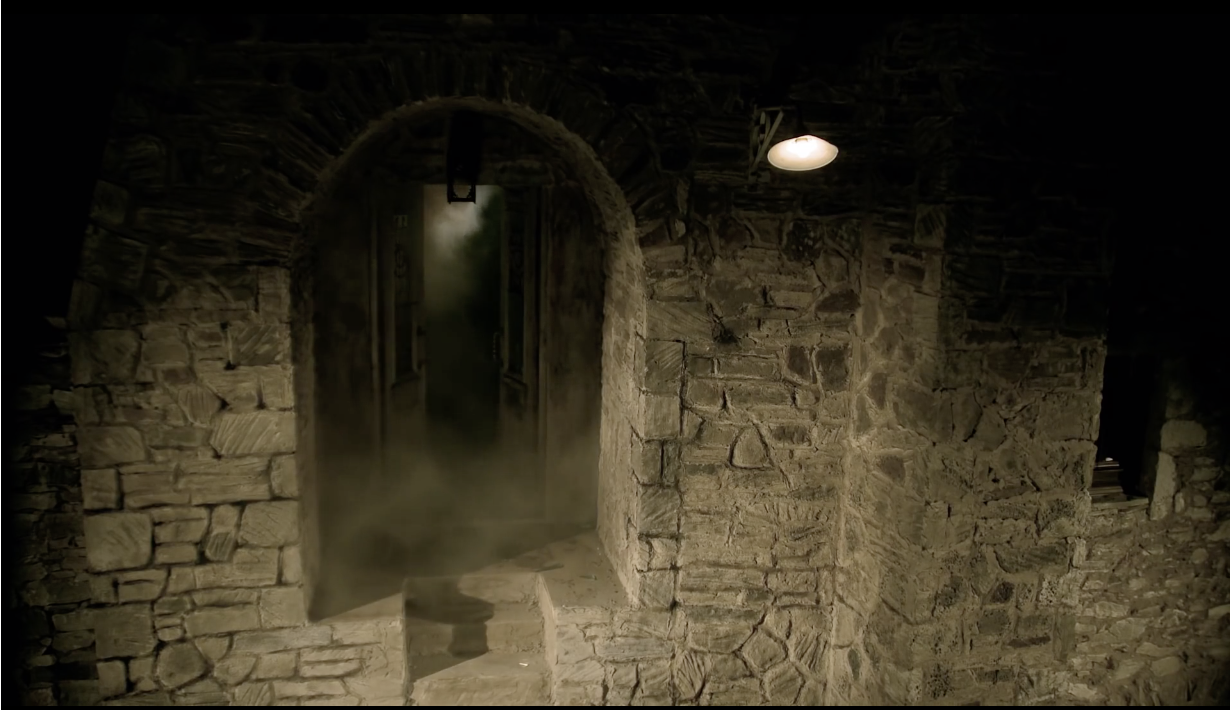


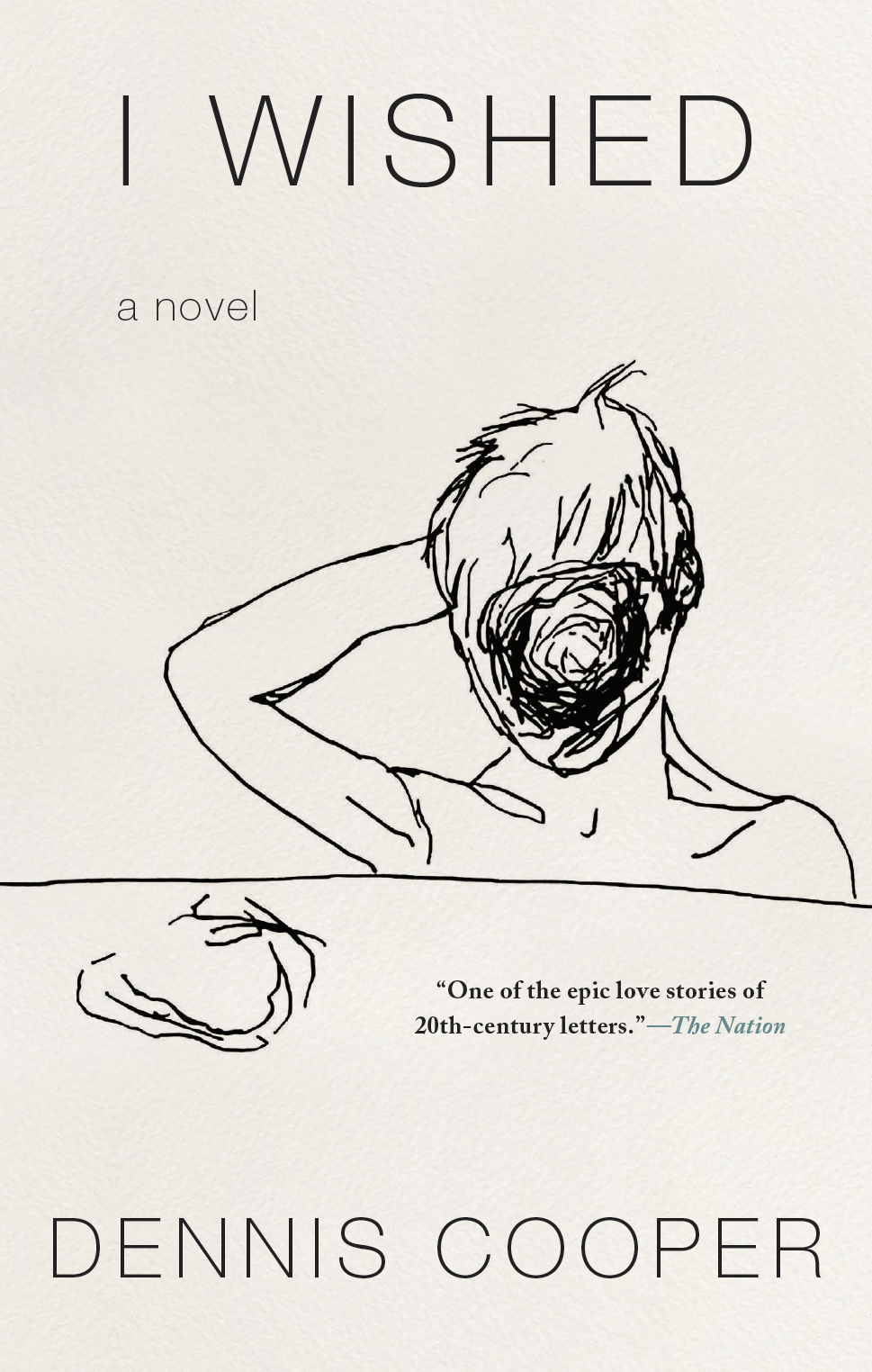

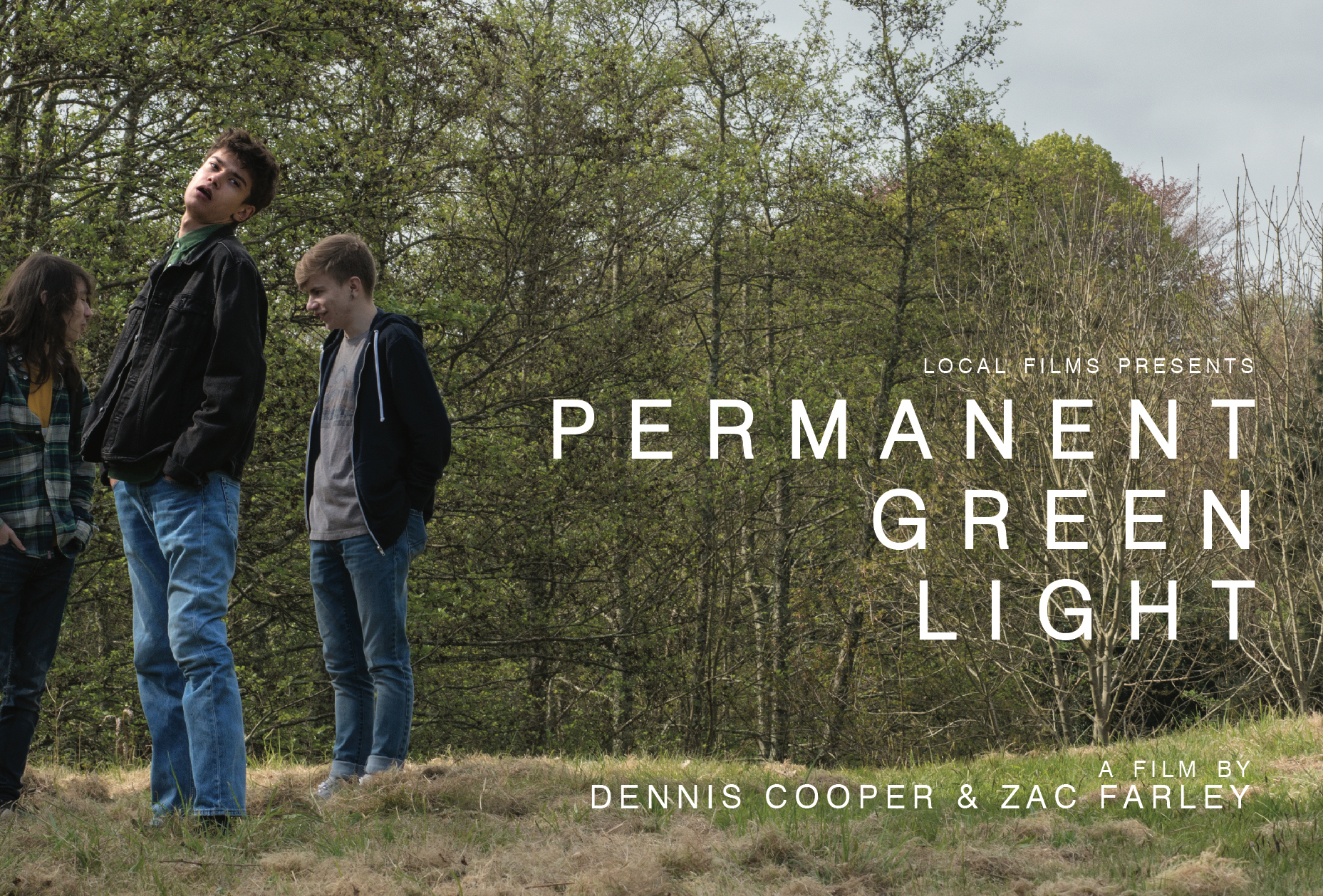 Now available in North America
Now available in North America 